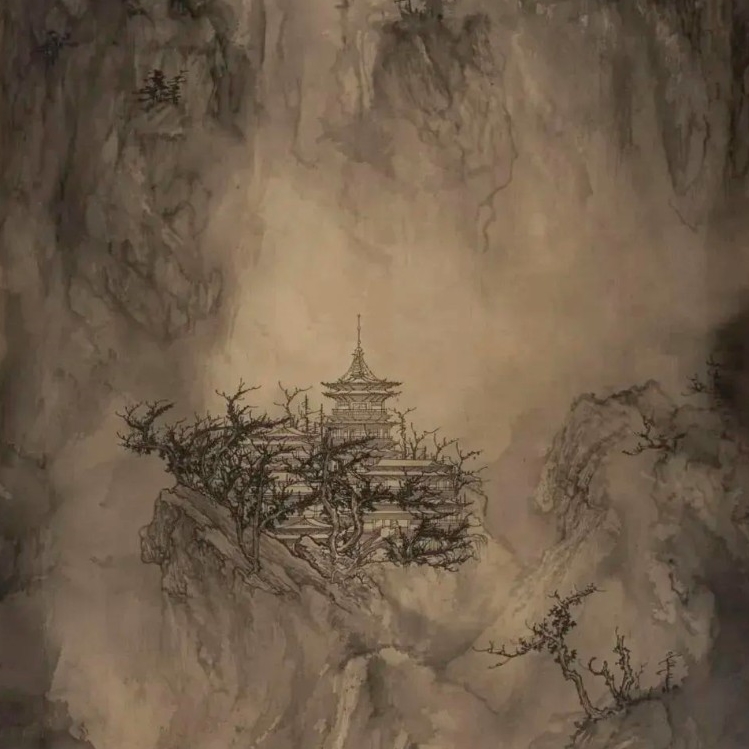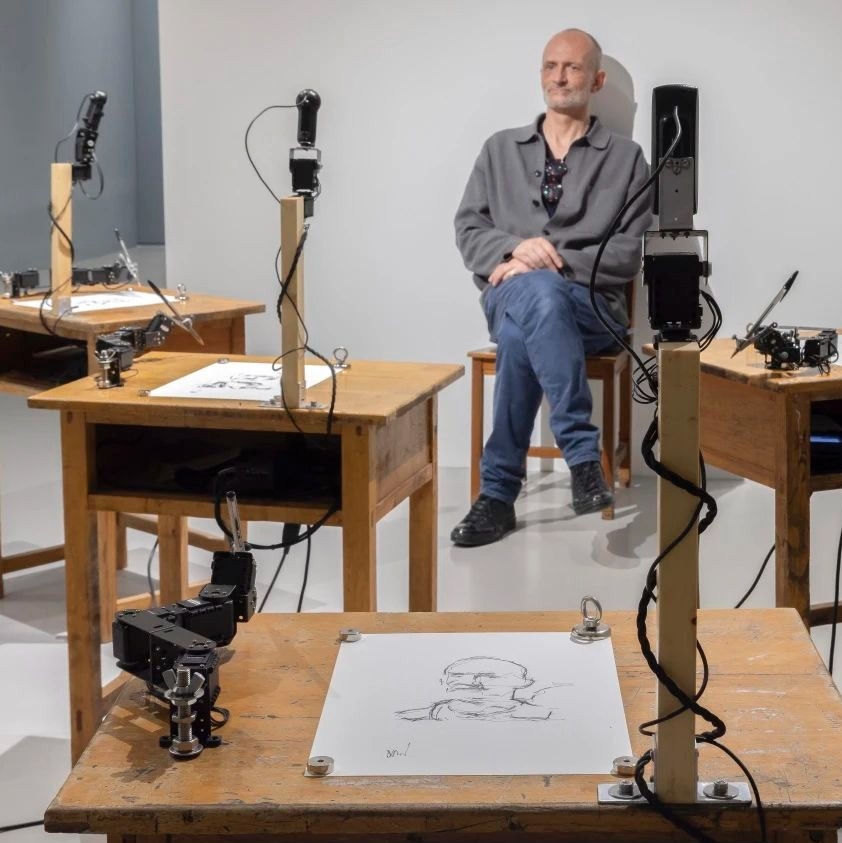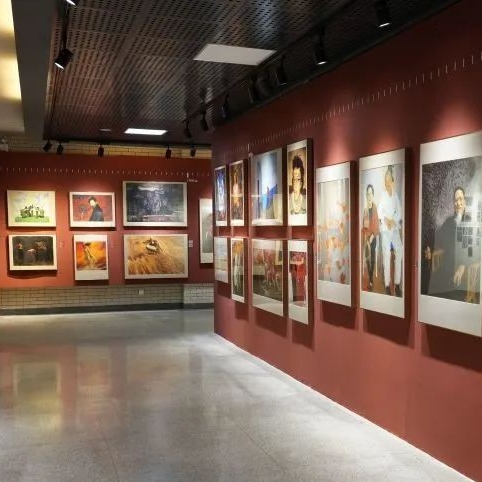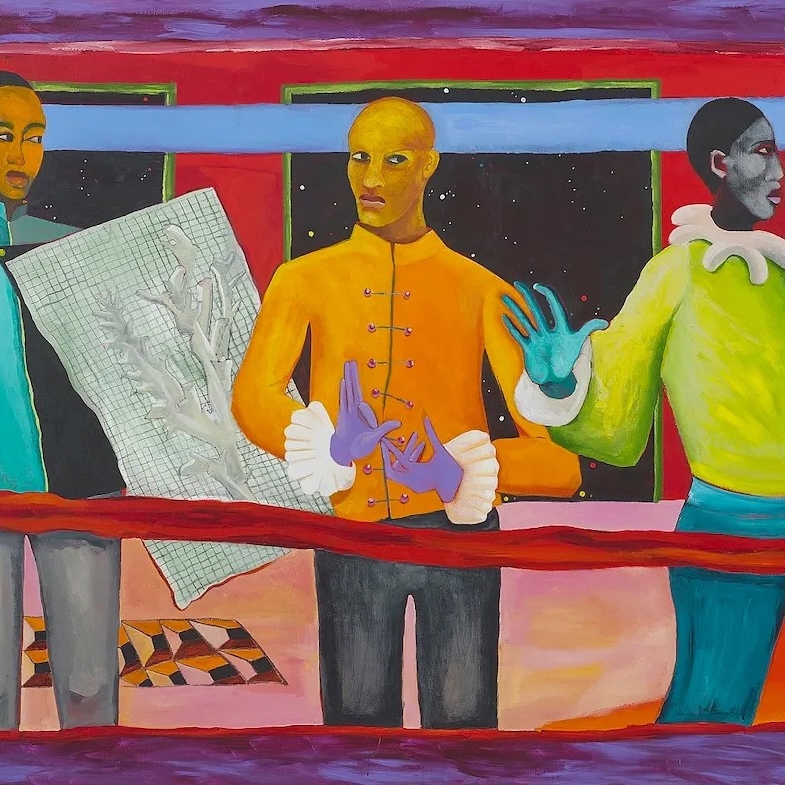 Zeng Fanzhi, Untitled, 2022. Oil on canvas 240 x 400 cm / 94 1/2 x 157 1/2 in © Zeng Fanzhi Courtesy the artist and Hauser & Wirth.
Zeng Fanzhi, Untitled, 2022. Oil on canvas 240 x 400 cm / 94 1/2 x 157 1/2 in © Zeng Fanzhi Courtesy the artist and Hauser & Wirth.
Hauser & Wirth's Downtown Arts District location will host Zeng Fanzhi, the first Los Angeles solo exhibition by the renowned Chinese artist, featuring a series of monumental, abstract landscapes presented harmoniously within the distinctive soaring space of the South Gallery.
Zeng Fanzhi's intuitive approach to the canvas is evident in his bold, expressionistic abstractions evoking natural phenomena. Rendered with a dynamism and exquisite palette, these paintings echo the magnetism and perceptual impact of 20th century colour field painting but with a distinctively 21st century aura. Heralding Zeng Fanzhi's latest technical breakthroughs, the works on view initiate the artist's use of bright, saturated fields of colour to define a painting. A seemingly vast expanse of hues, closer inspection of each surface reveals a delicate interwoven palette of vivid pigments.
This exhibition marks the latest in Hauser & Wirth's ongoing series of Los Angeles presentations conceived to introduce the city to the oeuvres of foremost international contemporary artists, further forging connections across geographical and cultural territories.
About the Artist

Portrait of Zeng Fanzhi. Photography by Li Zhenhua © 2018 Zeng Fanzhi
Zeng Fanzhi was born in Wuhan, China in 1964 and graduated from the Hubei Institute of Fine Arts in Wuhan in 1991. One of the most celebrated artists working today, Zeng is lauded across the globe for his technical mastery and ability to conjure emotion from his subject matter.
During his early education in Wuhan Zeng immersed himself in Western art, philosophy, and the Social Realist techniques of the 1985 New Wave movement in China. These interests informed his earliest series of paintings, Meat Series and Hospital Triptychs. Both bodies of work are characterized by an approach that is at once objective and tender. Zeng renders human figures as merely slabs of pink and red flesh indeterminable from the animal carcasses that surround them, while also capturing the agonizing pain of his subjects with an empathetic brush. These early works between 1989 and 1994 set the stage for an intensely personal and expressive painting practice that documents a prolific period of social and economic development in Chinese history.
Working in the wake of rapid modernization and urbanization in China, Zeng turned his attention to figures from the industries around him, and began to paint businessmen and politicians, always wearing masks so as to disguise human pain and agony behind a ‘socially acceptable’ face. Inspired by artists as diverse as Francis Bacon, Willem De Kooning, Max Beckmann, these works, known as the Mask and Behind the Mask series, straddle realism and imagination to reveal a meticulous attention to technical detail, merged with a free and expressionistic style of painting.
Following a period of critical and commercial success, Zeng made the conscious decision to move away from formal figuration and rules guarding composition and representational painting, and entered into a new exploration of abstraction and expressive portraiture. In 1996 he embarked on a new series, removing the coverings from his subjects’ faces to reveal their raw emotion and the reality of their suffering.
Over the past two decades, Zeng has reacquainted himself with traditional Chinese ink painting, and art particularly from the Northern Wei to Song and Yuan Dynasties from the fourth to fifteenth centuries. Informed by these new interests, Zeng has moved further into abstraction, creating highly gestural landscapes that share the same dynamic energy of his portraiture. These canvases are traversed by lines, blending with and obscuring the legible objects in the background. Zeng has said of this work: ‘They are not real landscapes. They are rather about an experience of miao wu [marvelous revelation], a restless journey of discovery.’ Over the past 10 years, Zeng has developed this series to investigate the complex tension between nature, wildlife, and humanity.
In parallel to his experimentations with ‘landscape’ painting, Zeng continued to forge ahead with a more experimental language in his portraiture studies: the We series comprises distorted faces painted at extremely close range, employing large, circular brushstrokes that create a frenzied and urgent presence. These paintings are produced by a method that requires intense physical involvement: Zeng uses his entire body, stretching across the breadth of these large-scale canvases to apply color with multiple paintbrushes simultaneously.
About the Exhibition
Dates: 2 Feb – 30 Apr 2023
Venue: Hauser & Wirth, Downtown Los Angeles
Courtesy of the Artist and Hauser & Wirth.




























